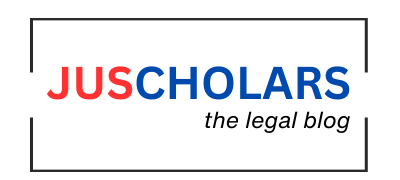The rise of social media platform like YouTube, Instagram and x made content certation easily accessible to the large audience in country like India, this creates new wave of digital entrepreneurs. The Indian creators are regularly pushing their limit from creating the content like reaction videos, news commentaries to meme pages and education reels also. But this digital transformation took attention on the significant legal challenge like fair use and copyright violations. For content creators in India, understanding the degree of Copyright Act,1957, is no longer a choice, it becomes crucial for survival in the rapidly increasing creator economy.
Central of this discussion is the doctrine of “fair dealing,” which permits for the specific use for which owner’s permission is not required. But what constitute “Fair” in the remix driven world of social media? This blog will portray the complexities of the fair use in Indian context while offering some practical advice for the creators to innovate without infringing the content.
Understanding Fair Use in the Indian Context
In Indian Copyright Law, under Section 52 of the Copyright Act, 1957, provides for ‘fair dealing’ which is different than the ‘fair use’ doctrine in the United States. Under Indian situations ‘fair dealing’ concept is more restrictive, permitting the works for specific purposes like news reporting, revies or criticism. If a social media creator, his work must fall under one of these categories for it to be considered as fair dealing.
Still in the Indian Copyright Act there is no explicit definition of what to be considered as ‘fair’, Indian Courts rely on four- factor test, which is similar to the one used in US law, to determine that whether the use of copyrighted content is permissible or not. These factors are:
- The Purpose and Character of the Use: Is the new work for commercial gain or for non-profit, educational purposes? Crucially, is the new work “transformative”? A transformative work adds new meaning, message, or expression to the original, rather than just repackaging it. Reaction videos, for instance, can be transformative if they offer substantial commentary and critique, rather than just showcasing the original content.
- The Nature of the Copyrighted Work: The law generally affords greater protection to highly creative works, such as music and films, than to factual works like news reports. However, this doesn’t give creators a free pass to use news footage without context.
- The Amount and Substantiality of the Portion Used: There are no hard and fast rules on how much of a copyrighted work can be used. A few seconds of a movie clip might be considered fair dealing in a review, but using the most crucial scene, even if short, could be deemed an infringement. The key is whether the portion used is essential for the purpose of the new work.
- The Effect of the Use Upon the Potential Market: Does the new work serve as a substitute for the original? If a creator’s video fulfils the same demand as the copyrighted work, thereby harming its market value, it is less likely to be considered fair dealing.
Social media content, by its very nature, is often transformative. A “roast” video, a detailed film analysis, or a meme that uses a movie still to comment on a current event all add new layers of meaning to the original work. It is this transformative quality that often forms the strongest argument for fair dealing.
Key Legal Disputes: A Wake-Up Call for Creators
The recent and highly publicised dispute between the news agency Asian News International (ANI) and several Indian YouTubers in 2024 has thrown the issue of fair dealing into sharp relief.
Many social media channels were using ANI’s news clips without its permission, as a result of this ANI issued copyright strikes against those channels, leading to a debate on rights of creators to comment and report on current events. The youtubers defended their acts using fair dealing concept and argued that the use of short clips for commentary in fair dealing not a copyright infringement.
This case highlights strict enforcement of copyright by certain right holders and the uncertain position of creators who depends on ongoing media to develop new, transformative work. Making the situation more complex is the Section 79 of the information Technology Act, 2000. Clause provides “safe harbour” protection to mediators such as YouTube and Instagram, protecting them from liability for copyright violations carried out by their users. Nevertheless, this protection depends on the platform removing infringing content upon receipt of a legitimate complaint. This has resulted in the expansion of automated technologies like YouTube content’s content ID.
YouTube’s Content ID system automatically analyses the uploaded videos by comparing them to a database of copyrighted material. If match is identified, the right holders have the option to monetizes, monitor, or restrict the video. However effective, this system regularly conflicts with the doctrine of fair dealing. An algorithm cannot discern the nuances of transformative use, commentary, or parody. As a result, legitimate content created under the ambit of fair dealing is often flagged and taken down, leaving creators with a lengthy and often frustrating appeals process. This automated enforcement can stifle creativity and disproportionately affects smaller creators who lack the resources to fight every copyright claim.
Practical Tips for Staying on the Right Side of the Law
Given the legal grey areas and the aggressive stance of some copyright holders, how can Indian content creators protect themselves? Here are some practical tips:
- Brevity is Your Friend: While there’s no magic number, using short clips (generally under 10 seconds) is less likely to be seen as a substantial appropriation of the original work.
- Transform, Don’t Just Transmit: Your content should add something new. Provide commentary, offer a critique, create a parody, or use the clip to illustrate a larger point. The more transformative your work, the stronger your fair dealing claim.
- Credit Where Credit is Due: Always attribute the original source of the copyrighted material. While attribution is not a substitute for fair dealing, it demonstrates good faith.
- Seek Permission When in Doubt: If you plan to use a significant portion of a copyrighted work, or if your use is not clearly transformative, it’s always best to seek permission from the copyright holder.
- Understand Platform Policies: Informs yourself with the copyright instruments and dispute resolution mechanism of the platform you utilize. Being aware of the regulations can assist you in dealing with claims more efficiently.
The Road Ahead: Challenges and the Need for Clarity
One of the primary challenges faced by Indian content creators is the absence of absolute judicial precedent about fair dealing in the field of social media. The legislation, created during a pre-digital period, discovers it challenging to adapt to the swift upgrades in online content creation. There is an urgent requirement for modifications to the Copyright Act to specifically deliver to the conditions of the digital era and to offer clearer directives for creators.
On a global scale, there is noticeable shift towards increased regulation. The European Union’s controversial Article 17 (Article 17 of the EU copyright directives) enforces grater obligations on platforms to filter copyrighted material. However, India has not yet adopted a similar approach, such international developments may impact upcoming legislative reforms.
Conclusion: Knowledge is Power
For Indian social media creators, a comprehensive understand of fair dealing is not entirely a legal obligation, it is a crucial aspect of creativity. In a digital environment overfill with copyright conflicts and automated enforcement mechanisms, being well informed handle as the best protection. By remaining aware of their rights and duties, creators can continue to generate innovative and interesting content without the unbroken anxiety of legal consequences. Basically, there is a pressing need for a more defined legal framework to achieve a fair distribution between safeguarding the rights of copyright owners and supporting the dynamic and transformative culture of social media. Until such a structure is established, it is the responsibility of creators to move carefully through uncertain times, creativity, and a significant level of legal understanding. The future of India’s creators’ economy depends on this.
Author: Shreeram Meena and Amit Shakya, both are 1st-year BA LLB students at Dharmashastra National Law University






